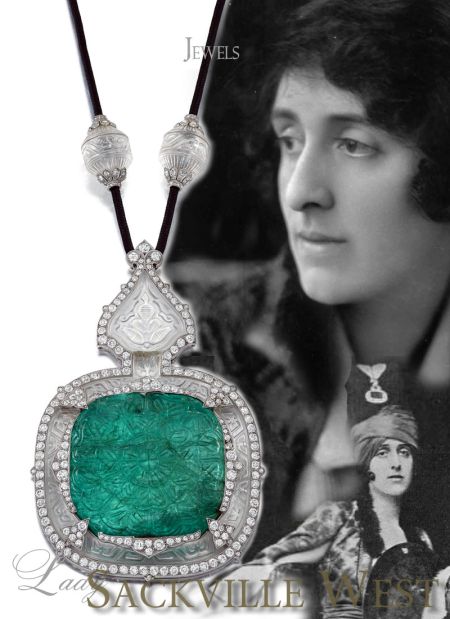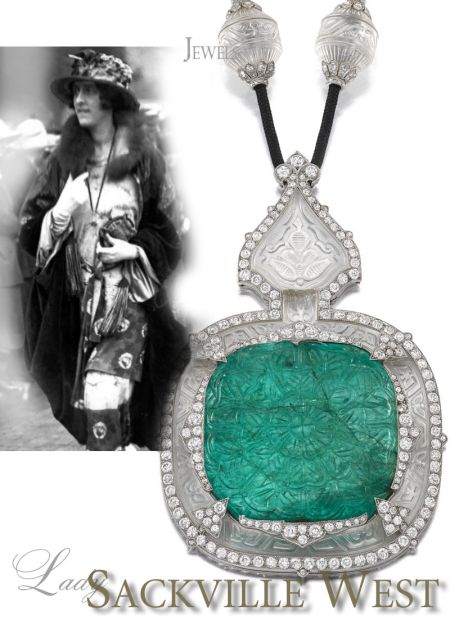King George VI also bought a matching brooch in rubies for Princess Margaret

Maison Cartier, Cartier Paris, Cartier London, Cartier New York, Cartier necklace, Cartier sautoir, Cartier bracelet, Cartier Art deco, Cartier Belle Époque, Cartier Ring, Cartier Brooch, Cartier Art deco Brooch, Cartier Stomacher, Cartier garland style, garland, Cartier Tiaras, Cartier Tiara, Cartier diadem, Cartier Diademe, Cartier Diadema, Cartier Diademas, Cartier aigrette, Cartier diamond, ‚The Great Necklaces‘,nadelhoffer,nadelhoffer cartier Cartier: Jewelers Extraordinary
Maison Cartier is a luxury French jewelry and watchmaking house founded in 1847 by Louis-Francois Cartier. Over the years, the brand has become known for its exquisite craftsmanship and iconic designs, and has created some of the most significant historic jewels of the 20th century.
One of the most famous historic jewels created by Maison Cartier is the „Hope Diamond,“ a 45.52-carat blue diamond that was originally mined in India. In 1910, the diamond was purchased by Cartier and was later sold to American socialite Evalyn Walsh McLean. The diamond remained in her family until 1958 when it was sold to Harry Winston, and eventually ended up at the Smithsonian National Museum of Natural History in Washington D.C.
Another notable historic jewel created by Maison Cartier is the „Tutti Frutti“ bracelet, which was designed in the 1920s and featured a combination of colored gemstones in a unique, Art Deco-inspired style. The bracelet was a favorite of many wealthy clients, including Daisy Fellowes, the granddaughter of the founder of the Singer Sewing Machine Company.
Maison Cartier also created several tiaras and other pieces of jewelry for royal families around the world. One such piece is the „Halo Tiara,“ which was created for the coronation of King George VI’s wife, Queen Elizabeth, in 1937. The tiara features 739 brilliant-cut diamonds set in platinum. Halo Tiaras.
‘halo’ style, popularised by Cartier to suit the softer hairstyles of the 1930s and intended to be worn at a steep angle at the front of the
head. Halo tiaras were especially in demand with Cartier’s London clientele.Halo tiaras are worn at a steep angle, high on the crown
of the head, encircling the wearer with a halo-like
blaze of precious stones. The style was developed in
the 1930s, serving as the perfect complement to the
closely cropped, waved hairstyles that were in favor.
In addition to its historic jewels, Maison Cartier continues to create new and innovative designs to this day. The brand has remained a symbol of luxury and refinement for over 170 years and continues to be a favorite among celebrities and high-profile clients. mughal jewels,

A jewellery exhibition for charity was held at Cartier’s Cocktails to celebrate the opening of a new H.Q. for Messrs. Bumpus Miss Beryl Heim and Miss Heather Mason. They are pupils at the John Douglas Finishing School.
The jewel exhibition by Cartier’s helped the National Playing Fields Association Bumpus, the booksellers, gave the party to open their new shop at 6 Baker Street.
Mr. H. E. Bates and Mr. J. G. Wilson (chairman of Bumpus). /Vlr. E. M. Forster and Mr. John Morris. Mrs. Frank Coven and Mrs. Roma Fairley, the author, whose new book, The Small Screen, is being published soon Mrs. David Greig with Lady (Noel) Curtis Bennett whose husband founded the National Playing Fields Association Mr. Graham D. Llewellyn of Sotheby’s and Mrs. C. Dresner. Airs. W. Redford and Mr. E. Schwaiger Desmond U’in&iII Sir Robert Lady Hobart. He is associated with the House of Eraser Lady Cynthia Colville with Col. Jocelyn Gibbs (managing director of Geoffrey Bles and a director of Bumpus).Mr. Frank Swinnerton with Mr. R. Hart- Davis (of Rupert Hart-Davis, Ltd., publishers) Van Hallar.
We can see the Halo Tiara on display!


Cartier Halo Diamond Tiara Rani Shanker | Nepal Royal Family | Jewels
Cartier Halo Tiara Diadem – Rani Shanker, Nepal Royal Family. The Rani Bahadur Halo Tiara from Cartier is a stunning piece adorned with diamonds that once belonged to the Nepal royal family. This tiara symbolizes the grandeur and opulence of the Maharajas.
Wife of the Ambassador General Shanker Shamsher Jans Bahadur Rana| Sri 3 Maharaja of Kaski and Lamjung, Sir Chandra Shumshere Jung Bahadur Rana of Nepal | Hitory of royal jewels…..

Cartier Halo Diamond Tiara Rani Shanker | Nepal Royal Family | Jewel History
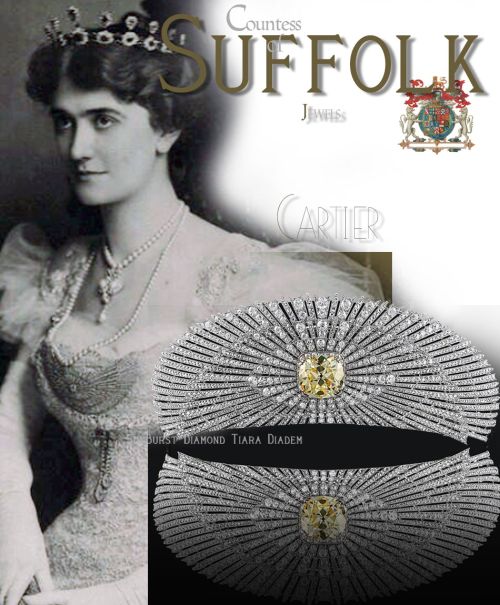
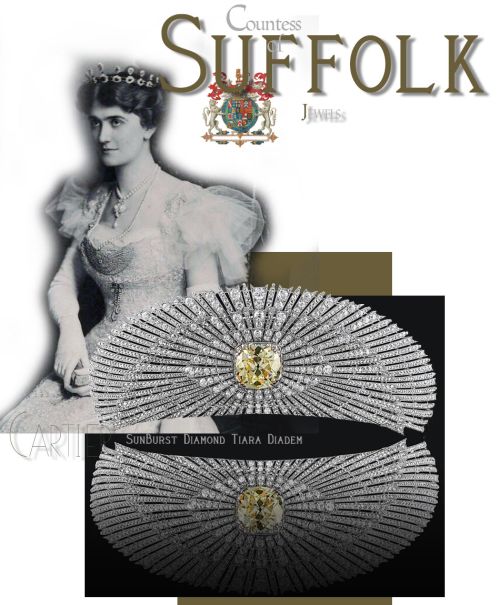
Miss Marguerite Hdye Leiter, popularly known as „Daisy,“ the youngest and only unmarried daughter of Levi Z. Leiter, was married in 1904, to to Henry Mollneaux Page Howard, nineteenth Earl of Suffolk and Berkshire. Miss Leiter is the third daughter of the house to contract a marriage with a noble family of England. Her eldest sister, who was Miss Mary, married Lord Curzon, Viceroy of India.
Her other sister, Miss Nancy, married Major Colin Campbell, a cousin of the Duke of Argyle, on November 29 last. Miss Leiter never looked lovelier than in her soft clinging gown of Libertin satin, veiled with exquisite point de Venice lace, over which fell her tulle veil, held In place by a tiara of diamonds. This tiara is one of the handsomest jewels of a rare collection of family heirlooms, which the Earl presented to his bride, probably the gemset tiara above.
A long rope of pearls, the favourite Jewel of the bride and which was the gift of her mother, was worn around her throat. She carried a graceful, loose cluster of white orchids and roses.
Diadem Ausstellung – Aristocratic Diademe
Lady Dianas Hochzeitstiara als Highlight der Jubilee-Tiara-Ausstellung bei Sotheby's
Im Rahmen der „Jubilee Season“, einem einmonatigen Programm mit Ausstellungen, Auktionen und Veranstaltungen zu Ehren der Regentschaft Ihrer Majestät, Königin Elisabeth, präsentiert Sotheby’s die größte Diadem-Ausstellung, die es seit 20 Jahren im Vereinigten Königreich gegeben hat – eine Hommage an eines der symbolträchtigsten Zeichen für den immerwährenden Stil der Monarchin: das Diadem.
In der Ausstellung werden rund 50 Diademe aristokratischer und königlicher Herkunft gezeigt, wobei einige Stücke zum ersten Mal öffentlich ausgestellt werden.
Nahezu alle Diademe der Ausstellung wurden für den britischen Adel angefertigt und befanden sich in dessen Besitz. Zusammen bieten sie einen schillernden und umfassenden Überblick über alle großen Stilrichtungen der Diademgestaltung anhand einiger der berühmtesten Vertreter dieses Genres.
Eine Reihe von Diademen in der Ausstellung wurden bei der Krönung der Königin 1953 getragen, so z. B.
das Anglesey-Diadem, das vermutlich um 1890 angefertigt wurde,
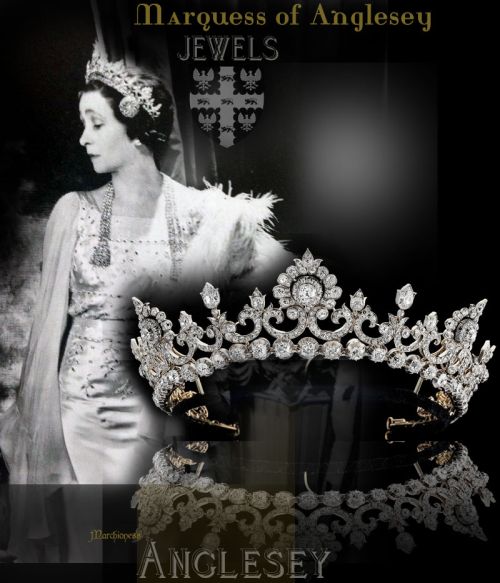
das Derby-Diadem, das ursprünglich 1893 für die Herzogin von Devonshire geschaffen wurde, und das


Sie stellen eine unmittelbare und zugleich beeindruckende Verbindung zu den diesjährigen Jubiläumsfeierlichkeiten her.


Mit fast 50 Exponaten zeigt die Ausstellung die etabliertesten Designstile innerhalb des Genres der Diademe, darunter das napoleonische Empire, den romantischen Naturalismus, die Belle Epoque, das Art Déco sowie moderne und zeitgenössische Designs.
Die Spencer-Tiara
Zu den ganz besonderen Stücken der Ausstellung gehört die historische Spencer-Tiara, die eines der eindrucksvollsten Mitglieder der königlichen Familie in Vergangenheit und Gegenwart trug. Sie wurde ursprünglich 1767 angefertigt und innerhalb der Familie Spencer über Generationen weitergegeben. Vor etwas mehr als 40 Jahren wurde sie von Lady Diana getragen und erregte Aufsehen, als sie bei der mit Spannung erwarteten königlichen Hochzeit des vergangenen Jahrhunderts die St. Paul’s Cathedral betrat. Nun wird sie zum ersten Mal seit den 1960er Jahren wieder in London ausgestellt.
Das berühmte, girlandenartige Design besteht aus einem zentralen, mit Diamanten besetzten herzförmigen Motiv, das von fortlaufenden Schnecken flankiert wird, die von stern- und trompetenförmigen, ebenfalls mit Diamanten besetzten, in Silber und Gold gefassten Blüten unterbrochen werden. Das herzförmige Stück hatte für Lady Diana eine besondere Bedeutung, da ihre Großmutter, Lady Cynthia Hamilton, dieses 1919 als Hochzeitsgeschenk anlässlich ihrer Heirat mit „Jack“, Viscount Althorp, dem späteren 7. Earl Spencer, erhielt.
Wie bei Schmuckstücken dieser Art üblich, wurde das Spencer-Diadem im Verlauf von nahezu 200 Jahren immer wieder ergänzt und umgestaltet, bis der Kronjuwelier Garrard in den 1930er Jahren den Auftrag erhielt, das Diadem zu einem endgültigen Schmuckstück zu gestalten. Lady Diana war bekannt dafür, dass sie die Spencer-Tiara sehr mochte. Sie trug sie häufig anlässlich Galaveranstaltungen – zwischen 1983 und 1992 trug sie das schillernde Stück mindestens siebenmal zu besonderen Anlässen während königlicher Reisen und hochkarätigen Ereignissen innerhalb und außerhalb des Vereinigten Königreichs.
The Aristocratic Jewels exhibition will run at Sotheby’s London New Bond St from 28 May to 15 June
Details of the Cartier Sautoir – Mughal Style – Magnificent Emerald Necklace
